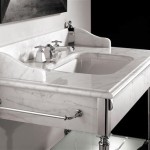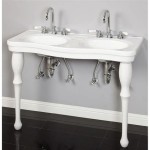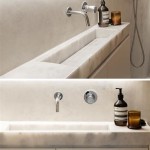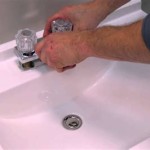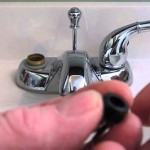Bathroom Vanity Hardware Installation Guide
Installing bathroom vanity hardware is a relatively simple DIY project that can significantly enhance the style and functionality of your bathroom. Whether you're replacing old hardware or adding new fixtures to a newly installed vanity, this comprehensive guide will walk you through the process step-by-step.
Tools and Materials
Before embarking on the installation, gather the necessary tools and materials to ensure a smooth and successful project. These include:
- New bathroom vanity hardware (knobs, pulls, towel bars, etc.)
- Screwdriver (Phillips head and flathead)
- Level
- Measuring tape
- Pencil
- Drill with appropriate drill bits
- Safety glasses
- Optional: Painters tape, wood filler, sandpaper
Preparing for Installation
Prior to installing your new vanity hardware, the following preparatory steps are crucial:
- Remove Existing Hardware: Carefully remove any pre-existing hardware from the vanity. Use a screwdriver to loosen and remove screws, taking care not to mar the surrounding surface. Note the placement of the old hardware, as this can serve as guidance for the new installation.
- Clean the Surface: Thoroughly clean the surface where the new hardware will be installed. Use a mild cleaning solution and a soft cloth to remove any dirt, grime, or adhesive residue. Allow the surface to dry completely before proceeding.
- Mark Installation Points: Using a measuring tape and pencil, carefully mark the desired locations for the new hardware. Ensure that the markings are accurate and level by using a level. If necessary, use painter's tape to protect the surrounding surface from accidental marking.
Installing the Hardware
Now that the surface is prepared, you can proceed with the installation of your new vanity hardware. The specific steps may vary slightly depending on the type of hardware being installed, but the general procedure is outlined below:
- Drill Pilot Holes (If Necessary): For some hardware, it may be necessary to drill pilot holes before installing the screws. This helps to prevent the wood from splitting and makes the installation process easier. Use a drill bit that is slightly smaller than the screw's diameter.
- Install Mounting Plate (If Necessary): Some hardware, such as towel bars, may require a separate mounting plate. Secure the mounting plate to the vanity surface using the provided screws. Ensure that the plate is level before tightening the screws.
- Attach Hardware: Line up your new hardware with the marked location and secure it to the vanity surface using the provided screws. If the screws provided are too long or too short, you may need to adjust the length using a drill bit or a screwdriver.
- Tighten Screws: Once the hardware is in place, carefully tighten the screws using a screwdriver. Do not overtighten the screws, as this can damage the hardware or the vanity surface.
- Check for Proper Functioning: Once all the screws are tightened, test the functionality of the hardware to make sure it is working properly. For example, if you installed knobs or pulls, try opening and closing cabinet doors or drawers. If you installed a towel bar, ensure it is securely mounted and capable of supporting the weight of towels.
Additional Tips for Success
To make the installation process even smoother, consider the following tips:
- Choose the Right Hardware: Select vanity hardware that complements the style of your bathroom and suits your personal preferences. Consider the size, shape, and finish of the hardware to ensure a cohesive look.
- Use a Level: Always use a level to ensure that the new vanity hardware is installed straight and level. This is especially important for towel bars and soap dishes.
- Pre-drill Holes: Pre-drilling pilot holes before installing the screws will prevent the wood from splitting and make the installation process easier.
- Use Wood Filler (If Necessary): If you are replacing old hardware, there may be holes left behind. You can fill in these holes with wood filler, sand them smooth, and then paint them to match the vanity.
By following these comprehensive instructions and taking your time, you can successfully replace or install new vanity hardware in your bathroom. The result will be a stylish and functional space that reflects your personal taste and enhances your overall bathroom experience.

How To Install A Vanity Forbes Home

How To Install A Bathroom Vanity And Sink

How To Install Cabinet Handles Ultimate Stress Free Tips

2024 Vanity Installation Cost A Complete Guide
Bathroom Vanity Guide Signature Hardware

A Step By Guide To Designing Your Bathroom Vanity

Ikouinc To 60 Ar Ba He Single Sink White Bathroom Vanity Instruction Manual

Guide Bathroom Vanities For Every Style

A Step By Guide To Designing Your Bathroom Vanity
Bathroom Vanities Free Signature Hardware
Related Posts
